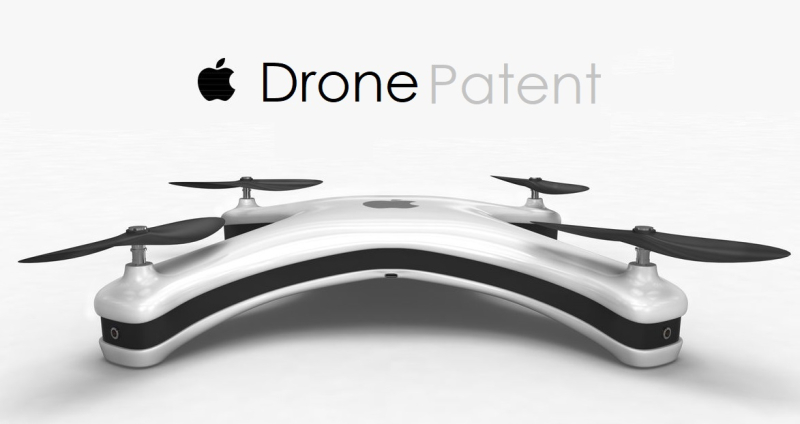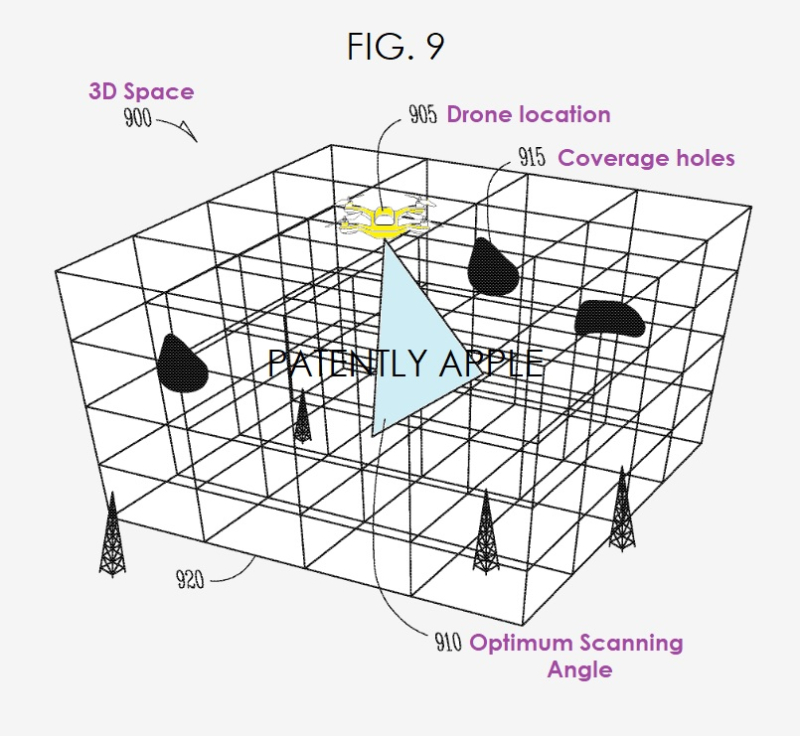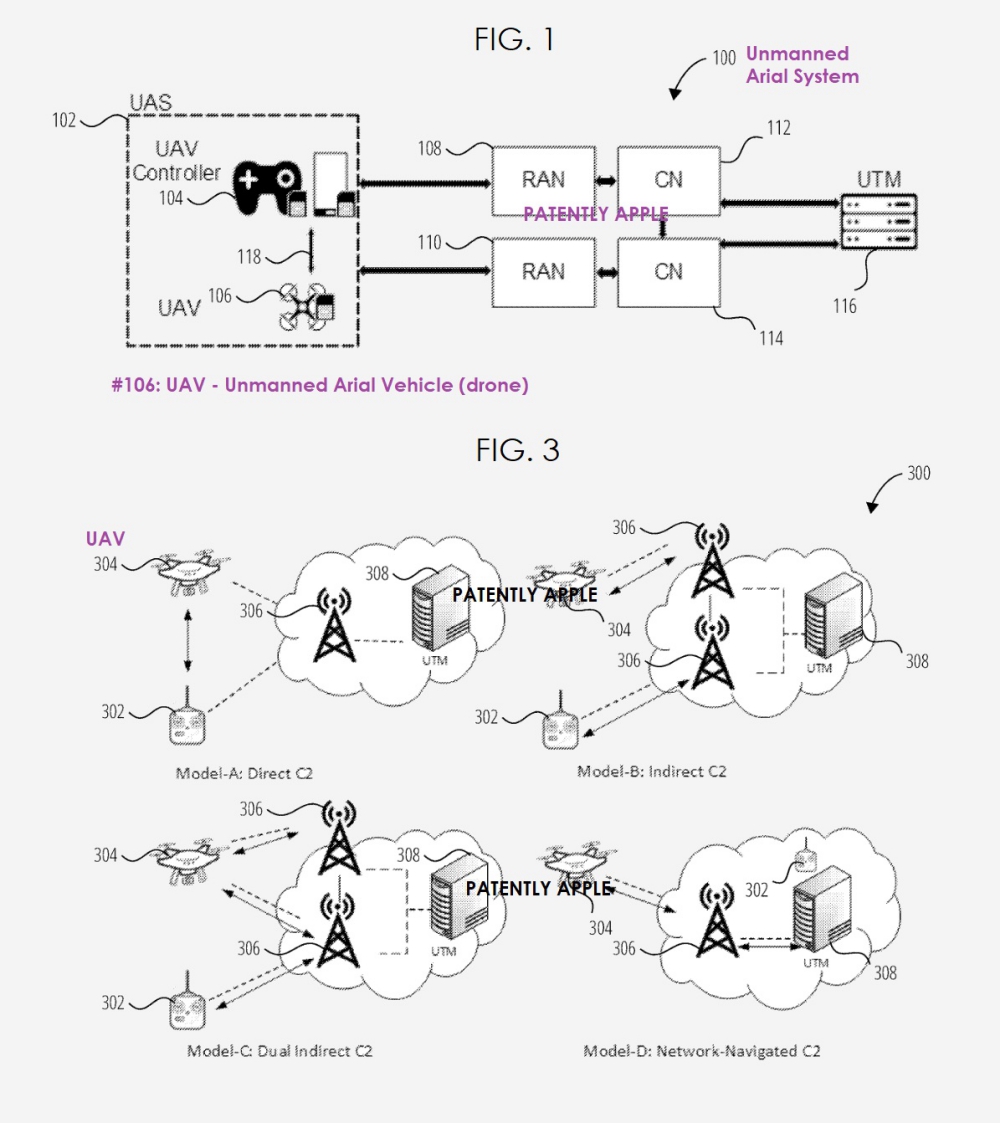In March Patently Apple posted an IP report titled “Apple has Won a Patent relating to Drones, Unmanned Aerial Vehicles,” and more importantly relating to drones connected to cellular networks. Below is Apple’s patent FIG. 9 from the March patent that illustrates a three-dimensional space for which an optimum scanning angle has been determined for a particular drone location.
On October 21st. the US Patent & Trademark Office published a patent application from Apple titled “Systems and Methods for using Unmanned Arial Systems in Cellular Networks.” It’s a technical patent that covers systems and methods provide for provisioning services for an unmanned aerial system (UAS) in a 3GPP network, enabling communication for command and control in 5G systems, and enabling UAS service for identification and operation in a 3GPP system.
Apple’s patent FIG. 1 below illustrates an example system #100 for UAS discovery and/or UAS operation using 3GPP technology according to certain embodiments. The system includes a UAS #102 comprising a UAV controller #104 and a UAV #106. The UAV controller includes a device configured to communicate with a radio access network (RAN #108). The UAV controller may comprise, for example, a radio frequency (RF) remote control (RC) device or an iPhone (smartphone).
Apple’s patent FIG. 3 above shows four C2 communication modes or models #300 in 5GS for UAS.
Apple’s patent application 20210329460 is a highly technical patent that wireless engineers and developers could better understand. This patent may have been one acquired from Apple’s acquisition of Intel’s 5G modem business back in July 2019.
While the Apple Store supports the DJI Mavic Air 2 drone for $800 that has a controller that uses an iPhone for its display, it’s unknown at this time how serious Apple is about a future iPhone/iPad accessory in the form of an Apple Drone.
Though in the big picture, I think that an Apple Drone would be a great accessory for Apple’s future mixed reality headset tied into Apple’s advanced cameras. That’s what makes this patent application very interesting.
Source: Patently Apple



